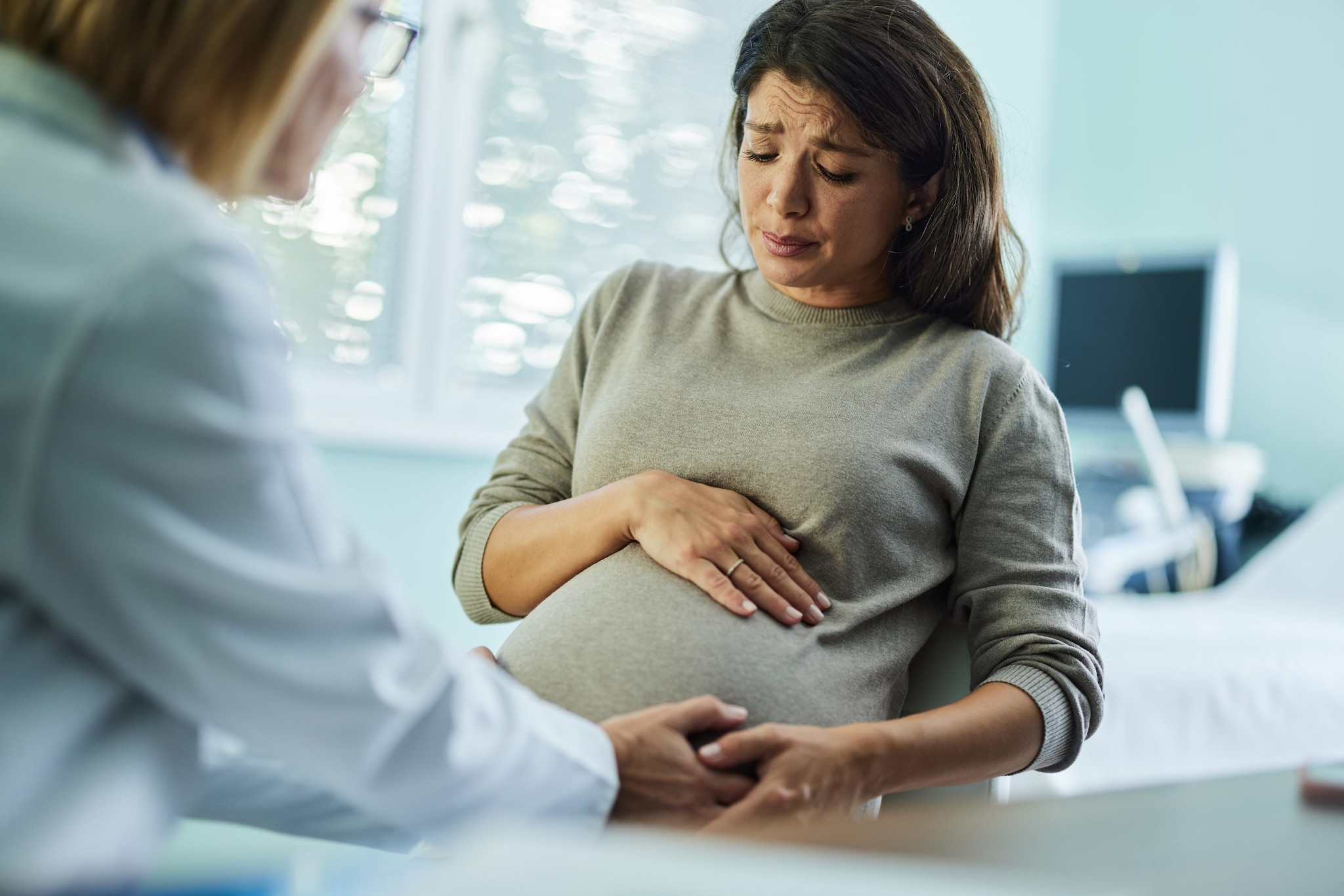Purpose
- Information to help with the management of patients who report eating a food that may have been contaminated with L. monocytogenes.

Patient management
This page presents a framework for assessment and medical treatment of high-risk people (pregnant women, older adults, and people with weakened immune systems) who may have been exposed to L. monocytogenes by eating contaminated foods.
The risk of invasive listeriosis after exposure to L. monocytogenes is very low. Exposure is common, but disease is rare. A study related to a 2011 outbreak linked to cantaloupe estimated the attack rate at roughly 1 case per 10,000 pregnant women who ate the implicated cantaloupe.
Management of pregnant women
The American College of Obstetrics and Gynecology has issued a committee opinion on the Management of Pregnant Women with Presumptive Exposure to Listeria monocytogenes.
Management of other people at risk for invasive listeriosis
Clinicians may consider using the framework below. This framework is not intended either as a practice guideline or as a modification of existing guidelines or practices in managing patients with confirmed or suspected listeriosis.
Little scientific evidence is available to inform decisions regarding management of people at elevated risk of invasive listeriosis who have been exposed to L. monocytogenes and who are either asymptomatic or have mild symptoms that could be consistent with early Listeria infection. Therefore, this suggested framework is based on informal solicitation of experts in infectious disease, obstetrics and gynecology, and public health in 2011.
Patient management decisions for asymptomatic or mildly symptomatic people are appropriately made on a case-by-case basis. These decisions should be informed by clinical judgment and the likelihood of exposure of the patient. Consultation with a specialist in infectious disease may be considered.
Exposed, asymptomatic
Most experts believe that no testing or treatment is indicated for an asymptomatic person with elevated risk of invasive listeriosis who ate a product recalled because of L.monocytogenes contamination. Such a patient should be instructed to return for medical treatment if he or she develops symptoms of listeriosis within two months after eating the recalled product.
Symptoms may include fever and myalgias, often preceded by diarrhea or other gastrointestinal symptoms. In older adults and immunocompromised people, symptoms of listeriosis can include headache, stiff neck, confusion, loss of balance, and convulsions.
Exposed, afebrile, mild symptoms
A person with elevated risk of invasive listeriosis who ate a product recalled because of L. monocytogenes contamination, who is afebrile and has signs and symptoms consistent with a minor gastrointestinal or flu-like illness, such as mild myalgias or mild nausea or diarrhea, could be managed expectantly; this approach limits low-yield testing. Alternatively, such a patient could be tested with blood culture.
If diagnostic tests are performed, some experts would withhold antibiotic therapy unless cultures yielded L. monocytogenes. Others would initiate antibiotic therapy while culture results were pending and then stop treatment if the cultures were negative. The antibiotic regimen could consist of oral ampicillin or amoxicillin, although it is important that both the clinician and the patient know that no effectiveness data exist for this scenario. If the blood culture yielded Listeria, standard antimicrobial treatment for listeriosis, typically including IV ampicillin and gentamicin, would be indicated.
Exposed, fever, and symptoms consistent with invasive listeriosis
An exposed person with elevated risk of invasive listeriosis with fever (>100.6° F, >38.1° C) and signs and symptoms consistent with listeriosis, for whom no other cause of illness is known, should be tested and treated for presumptive listeriosis.
- Diagnostic testing should include blood culture and other tests, such as culture of cerebrospinal fluid, as indicated by the clinical presentation.
- The antimicrobial regimen should be the standard therapy for listeriosis, typically including IV ampicillin and gentamicin for 14 to 21 days for nonallergic patients.
- If blood culture is negative and symptoms resolve, antibiotic therapy may be discontinued.
Exposed, history of symptoms in past 4 weeks, currently asymptomatic
Most experts believe that no testing or treatment is indicated for an asymptomatic person with elevated risk of invasive listeriosis who ate a product recalled because of L. monocytogenes contamination and experienced symptoms that have resolved. Any such patient should be instructed to return for medical care if they develop symptoms of listeriosis within 2 months after eating the recalled product.
Note
The suggested framework above does not include stool culture for L. monocytogenes. Stool culture has not been evaluated as a screening tool and is not recommended for the diagnosis of listeriosis.
Ingestion of food contaminated with Listeria occurs frequently because the bacterium is commonly present in the environment. Therefore, intermittent fecal carriage and shedding of Listeria is also frequent (about 5% in unselected populations, but substantial variation exists) and rarely indicative of infection. Stool culture for Listeria may also have low sensitivity and is rarely available in clinical laboratories.
Serologic testing for Listeria has poor sensitivity and specificity and is not recommended for diagnosis of listeriosis in individual patients.
